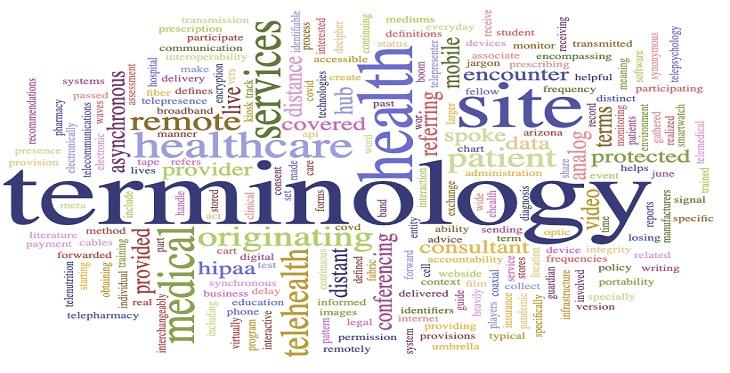
Starting off as a fellow with the Arizona Telemedicine Program this past June, it got me more and more interested in the specific jargon of telemedicine. At first I often used terms like “telehealth” and “telemedicine” interchangeably but as I got more heavily involved in the literature I realized they are two distinct terms. Telehealth is a more general term encompassing a larger umbrella of services, like hospital administration and training via technology; while telemedicine specifically refers to clinical services provided at a distance.
With the COVD-19 pandemic, telemedicine is becoming a larger part of the fabric of our healthcare system and many new provisions are being passed to make it more accessible to everyone. With this boom in telemedicine and its presence in our everyday lives, the terms defined below may be helpful to decipher the changes around us.
Analog: A method of sending information via continuous waves that change pattern as the information changes. Typical analog devices include tape players, VCRs and film.
API: Software interface that allows for interaction between components
Asynchronous: Stored medical information (e.g., test reports, images) is transmitted or forwarded to a provider for advice and/or diagnosis; hence there is a delay in communication.
Broadband: A telecommunications term referring to the a signal transmission method that can handle a wide band of frequencies using infrastructure mediums such as coaxial cables and optic fiber.
Cart: Mobile trolley that can carry devices
Consultant Site: The location where the provider is providing health services from. (Same as Hub Site and Distant Site)
Distant site: See Consultant Site.
eHealth: Healthcare services and delivery of health information provided via the internet.
Electronic Medical Record: Software that stores medical information (digital version of the patient chart).
Encryption: Online information that is converted into a secret code to keep secure
E-prescribing: The process of electronically writing and sending a prescription to a participating pharmacy.
HIPAA: “Health Insurance Portability and Accountability Act” – This act outlines the rules and regulations organizations have to follow to keep patient information confidential
Hub Site: See Consultant Site.
Informed Consent: Obtaining a patient’s (or legal guardian’s) permission before a telemedicine encounter to share/receive health information.
Interoperability: The ability of technology systems and services made by different manufacturers to create, exchange, store and use data without losing the context, integrity and meaning of the data.
Kiosk: A small, one person booth, which offers access to some sort of technology
Live Video Conferencing: Live (real time) two-way interaction via technology.
Mobile Health: Healthcare delivered through a mobile device such as a cell phone or smart watch.
Originating Site: The location where the patient is receiving services. (Same as Spoke Site, Referring Site, and Remote Site)
Protected Health Information: Any identifiable health information about health status, provision of care, or payment for care that is covered or gathered by a Covered Entity (or Business Associate of a Covered Entity). The Health Insurance Portability and Accountability Act (HIPAA) defines 18 identifiers that must be especially protected.
Referring Site: See Originating Site.
Remote Patient Monitoring: Use of digital technology to collect medical and other forms of health data remotely to track and monitor healthcare data from patients outside the healthcare environment for assessment and recommendations.
Remote site: See Originating Site.
Spoke Site: See Originating Site.
Store and Forward: Synonymous with asynchronous.
Synchronous: See Live Video Conferencing
Telehealth: Any healthcare-related service (including non-clinical such as administration, training, continuing medical education) provided at a distance via technology.
Telemedicine: Healthcare provider services service (e.g., telenutrition, telepsychology, telepharmacy) provided at a distance via telecommunications and other technologies.
Telepresence: Being able to participate virtually in an event or encounter through interactive technology.
Telepresenter: An individual trained in the use of telemedicine technologies and helps set up and guide telemedicine encounter interaction.
Webside manner: Specific techniques applied by healthcare professionals to build a stronger bond with patients they are interacting with via telemedicine


